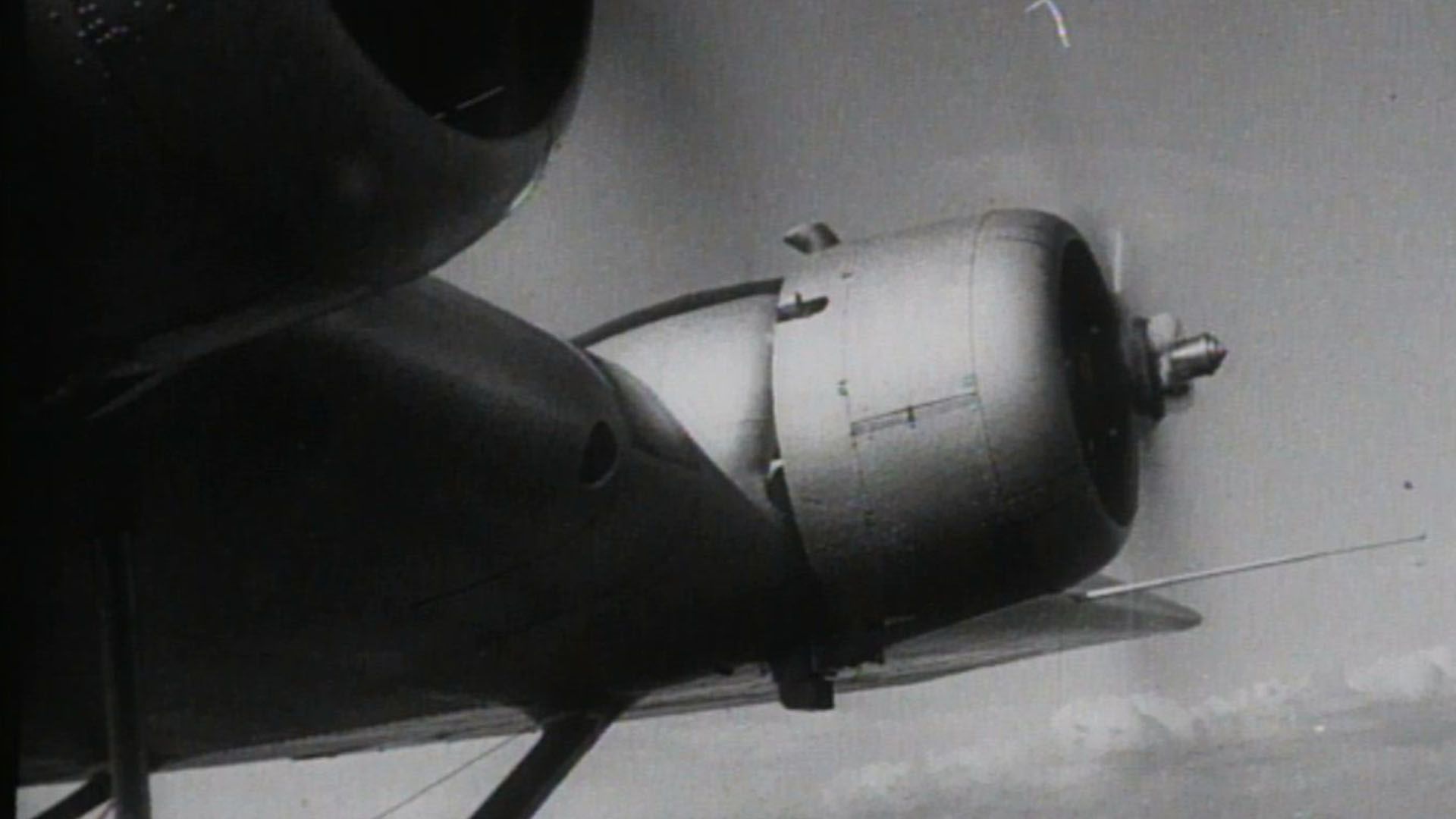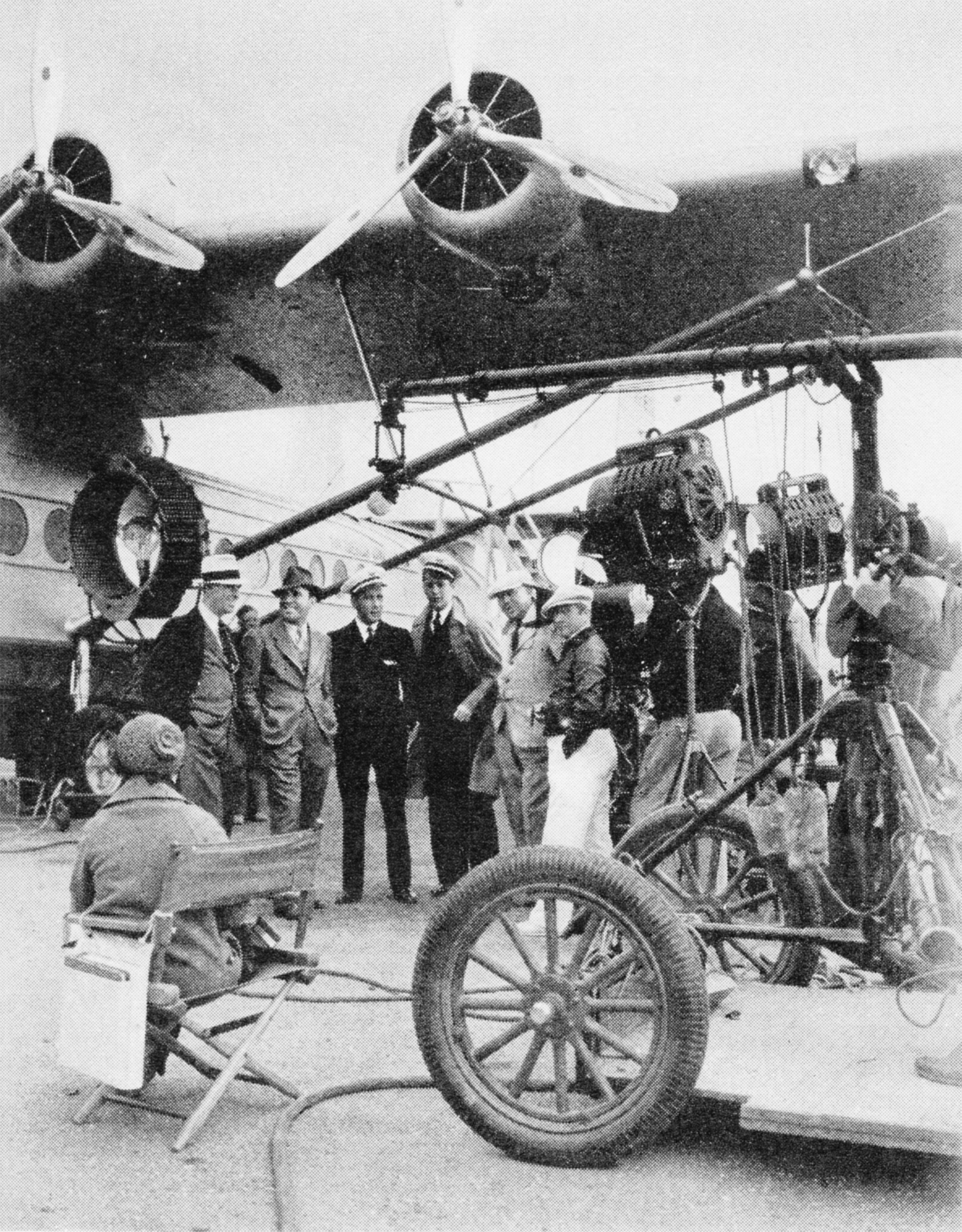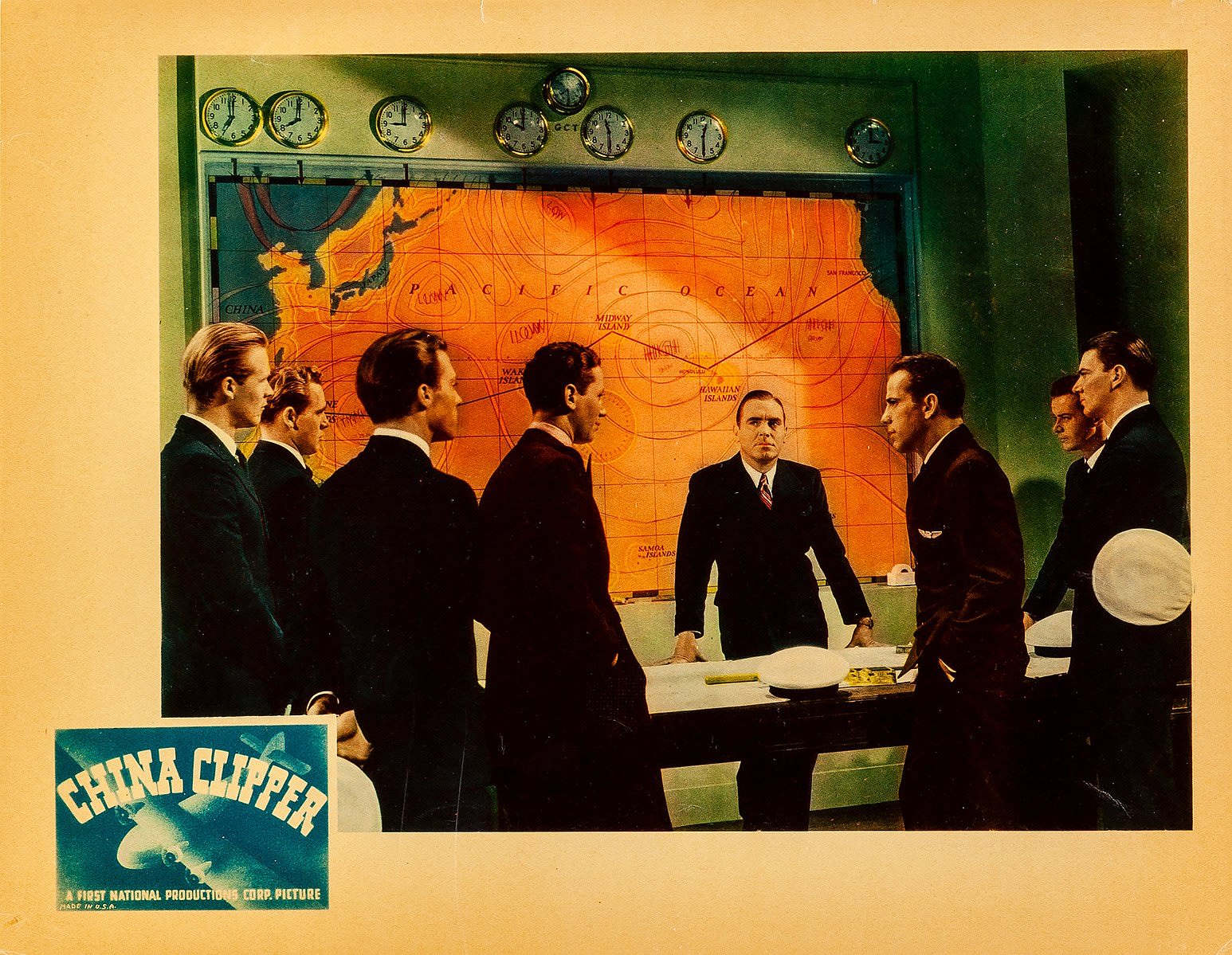ARCHIVAL INSIGHTS
Glimpses into Our Rich Collection of Historical Materials

1936 letter from Warner Brothers Publicist Morris Ebenstein to Pan Am's W.I. Van Dusen, regarding the "China Clipper" movie (PAHF/Johnson Collection).
1936 letter from Warner Brothers Publicist Morris Ebenstein to Pan Am's W.I. Van Dusen, regarding the "China Clipper" movie (PAHF/Johnson Collection).
"THE CHINA CLIPPER"
One of the more exciting papers that the Pan Am Historical Foundation has received as a donation, is a copy of a letter from Warner Brothers Publicist Morris Ebenstein to William Van Dusen, Pan Am's Public Relations Director, prior to the production of the 1936 feature film "China Clipper." Along with the contract, Warner Bros. was returning a synopsis of the log from Pan Am's M-130 "China Clipper" written by Van Dusen who served as technical advisor to the WB crew. Pan Am Flight Officers Marius "Lodi" Lodeesen and Scotty Lewis also advised on transpacific flying.
Beside a Pan Am S-42 . Left to right: Pan Am's William Van Dusen-Pan Am Director of Public Relations; Pat O'Brien; Humphrey Bogart; Ross Alexander; Ray Enright-Director of the film; and Charles Edeson-chief photographer ("Pan American Air Ways").
Beside a Pan Am S-42 . Left to right: Pan Am's William Van Dusen-Pan Am Director of Public Relations; Pat O'Brien; Humphrey Bogart; Ross Alexander; Ray Enright-Director of the film; and Charles Edeson-chief photographer ("Pan American Air Ways").
The story has its opening in New York harbor during the celebration of Lindbergh’s epochal flight to Paris. The leading character has just returned from a business trip to the Orient where he has arrived too late to conclude the important business deal for his firm. Impressed with the handicap of slow transport under which foreign trade is struggling, he, a former pilot, quits his job and with Walthall, who plays the part of an aeronautical engineer-designer, and Alexander, a pilot, begin establishing their service between Philadelphia and Washington. Their financial support withdrawn because they cannot make that line pay, they start all over again, this time securing national support for an international air route, Key West-Havana. The story then dramatizes the development of their company, “Trans-Ocean Airways,” through the conquest of airways across the Caribbean and through South America to the point where the challenge of the Pacific Ocean is taken up. The highly dramatic portion of the film depicts a race across the Pacific in the China Clipper.
Cast and crew at Alameda, "where an 'operations' conference had to be called to solve a problem in navigating the script." (L- to-R) Foreground: Mrs. Henry B. Walthall; Humphrey Bogart; scriptgirl; Ross Alexander; Owens-chief cutter; and Pat O'Brien ("Pan American Air Ways").
Cast and crew at Alameda, "where an 'operations' conference had to be called to solve a problem in navigating the script." (L- to-R) Foreground: Mrs. Henry B. Walthall; Humphrey Bogart; scriptgirl; Ross Alexander; Owens-chief cutter; and Pat O'Brien ("Pan American Air Ways").
I alternated with Scotty Lewis as technical advisor. My major contribution came in a scene when Captain Bogart and his mate sat in a mockup of the cockpit with one side cut away. Smoke from a machine with a fan blew past the assembly, giving the illusion of clouds. When the script called for switching on the auto-pilot, Bogart made a gesture as if turning on a switch. “Brick” Enright, the director, yelled, “Cut! How in the hell can you know that the plane is flying automatically?” We held a conference. For the next take, after Bogart turned on the auto-pilot, both pilots crossed their arms over their chests, indicating without a shadow of a doubt: Look Ma—no hands!... When we left this lotus land, Warner Brothers presented us with a four-digit check. We felt that we could not accept it—it would not have been fair to our colleagues. When our fellow-pilots got wind of this, the general opinion was “You should have taken the dough, you dopes, so we could have divvied it up.”
Photo: Lobby Card from the film "China Clipper," 1936. The movie starred Pat O"Brien, Ross Alexander, Beverly Roberts, Humphrey Bogart and Henry B. Walthall (Wikimedia Commons).
Photo: Lobby Card from the film "China Clipper," 1936. The movie starred Pat O"Brien, Ross Alexander, Beverly Roberts, Humphrey Bogart and Henry B. Walthall (Wikimedia Commons).
"ACROSS THE PACIFIC" DOCUMENTARY
In association with The Pan Am Historical Foundation, a three-part documentary series by Moreno/Lyons Productions – "Across the Pacific"– premiered on PBS/Virginia Public Media in May 2020.
When Pan Am's M-130 flying boat "China Clipper" took off for the first scheduled flight to Manila on November 22, 1935, it riveted the attention of people around the world. At that moment Pan Am vaulted to a commanding position and the world changed forever as a result.
That's the story brought to life in "Across the Pacific." Newly unearthed archival motion pictures, photographs, and original sound recordings as well as stunning graphics, help bring this history back to life.
The film tells the epic story of how Pan American Airways became the first to bridge the mighty Pacific - the first airline to cross any ocean.
Focusing in particular on the contributions of Pan Am’s visionary leader Juan Trippe, aircraft designer Igor Sikorsky, and radio engineer Hugo Leuteritz, the three-part program is currently streaming on PBS.



